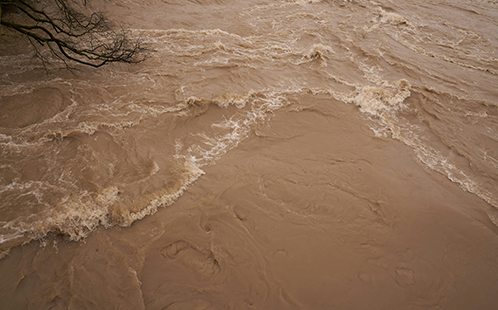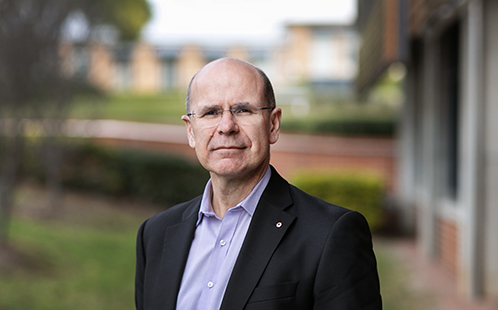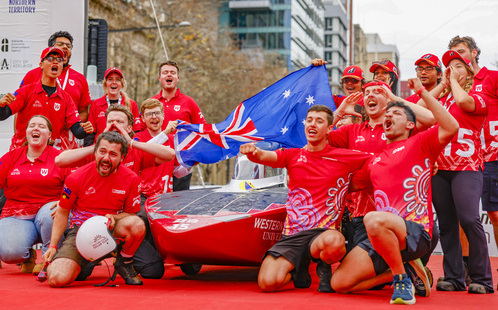Western Sydney University experts comment on NSW Flooding

Experts from Western Sydney University are available to provide commentary on the current flooding in New South Wales. They can speak on a range of critical issues including water quality and ecological impacts, risks of waterborne and mosquito-borne diseases, the role of social media in communication during emergencies, and the impact of disasters on infants, young children, and families.
Associate Professor Ian Wright, Western Sydney University, School of Science - water quality and ecological impact
Associate Professor Wright teaches classes in water science and management, environmental planning and environmental regulation. He has been a water scientist for more than 30 years and now leads a small team that conducts high-impact and highly engaged research that addresses water resource sustainability issues. He has published research on the water quality and ecological impact of wildfires on streams and high conservation-value peat wetlands in the Blue Mountains area, including the Greater Blue Mountains World Heritage Area.
“People should be very wary of wading into flood waters if they can avoid it. Flood waters are often highly contaminated with disease causing germs from human and animal faecal wastes. Urban sewage systems often overflow in times of wet weather and flooding. Be particularly careful if you have cuts or grazes. They could allow infection.”
“And similarly, town drinking water can become contaminated. I recommend filling containers with clean drinking water whilst it is available. Just in case."
Professor Alison Hutton, Western Sydney University, School of Nursing and Midwifery - social media during natural disasters
Professor Alison Hutton explores how local communities use platforms like Twitter, Facebook, and TikTok during crises such as bushfires, floods, cyclones, and droughts.
“Social media isn’t just about communication—it’s about connection. Social media allows communities to share real-time information, support each other emotionally, and advocate for action during some of the most challenging moments.”
“During natural disasters social media is a powerful tool that allows people to stay connected and informed. In the lead up to an event communities can monitor evolving conditions and share weather updates. Throughout an event they can seek safety information and share firsthand reports. After the event they can use social media to coordinate recovery efforts, share health and safety guidance, raise funds and call for political accountability on issues such as climate change.
“People want to be heard, supported, and connected. Social media provides a platform for all three—but it must be used responsibly.”
Dr Thomas Jeffries, Western Sydney University, School of Science - environmental microbiology, emerging diseases, historical pandemics
Dr Thomas Jeffries is a Senior Lecturer in Microbiology at the School of Science at Western Sydney University. His work involves studies related to the human microbiome, marine biology, soil, environmental microbiology, and climate change impacts, with applications in water management and marine ecosystems.
“Flooding can increase the risk of waterborne diseases. Overflow of sewage drives up numbers of coliform bacteria such as E coli and enteric viruses. Increased nutrients from run off can also cause blooms of harmful bacteria such as Vibrio. Increased breeding areas for mosquitos also increases the risk of mosquito borne viruses. Whilst there is no evidence of melioidosis endemic to NSW, people should avoid floodwaters wherever possible."
Adjunct Professor Karleen Gribble, Western Sydney University, School of Nursing and Midwifery - young children and families in emergencies
Adjunct Professor Gribble is a world-leading researcher on infants and young children in emergencies and has been involved in research, policy development and training in this area since 2006. She conducted the first comprehensive study of the experiences of families with babies and toddlers of an Australian disaster with the Babies and Young Children in the Black Summer (BiBS) Study.
"Members of the community can play an important role in supporting pregnant women and families with babies and toddlers in disasters. Friends and family who have a home that is safe in the disaster can offer it as a place of evacuation. In evacuation centres, community members and emergency responders should check in with parents, especially mothers who have evacuated on their own with small children, and ask if they have everything that they need. Providing a separate and supported space in evacuation centres for pregnant women and families with very young children can also help to keep them safe. Following disasters it can be difficult for parents, especially mothers, to look after themselves and their young children. This is especially the case after floods when clean-up can be overwhelming. The impact on the development of babies and toddlers can be significant and long-felt. Family members, friends and community organisations need to work together to support new mothers.”
Following on from the BiBS Study and with the assistance of Professor Gribble, the Australian Breastfeeding Association has developed resources to help parents and to help emergency responders to support families with young children during and after Australian disasters including evacuation kit lists, guides on keeping infants safe in evacuation centres and the Mother-baby area guide for Australia. For more information, visit https://www.breastfeeding.asn.au/emergency-resources-babies-and-toddlers (opens in a new window) and https://www.breastfeeding.asn.au/supporting-families-emergencies (opens in a new window).
For further insights, read Adjunct Associate Professor Gribble’s recently published paper on the experiences and support for caregivers during the 2019-2020 bushfires: Experiences and Support for Caregivers of Infants and Young Children (opens in a new window).
Latest News

ABC RN transcript: Vice-Chancellor Professor George Williams discusses higher education sector, student support, and the impact of AI
The following is a transcript of an interview that aired on ABC Radio National Saturday Extra between presenter, Nick Bryant and Vice-Chancellor, Distinguished Professor George Williams AO.

Western Sydney University are the number one Australian solar car team at the 2025 Bridgestone World Solar Challenge
Western Sydney Solar Car team has crossed the finish line placing preliminarily sixth in the world overall, and the number one Australian team in the world’s most prestigious solar car challenge.

Western Sydney University Statement on Cyber Incidents
Western Sydney University has issued an update to its community following confirmation that previously stolen personal information was published online, including on the dark web.
Mobile options:

